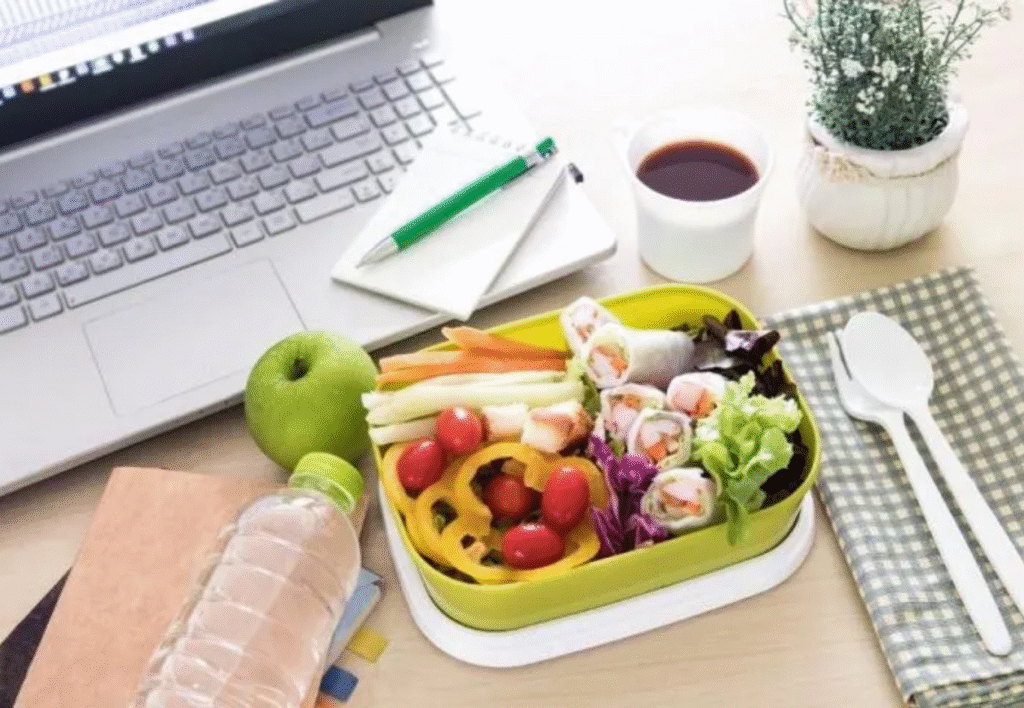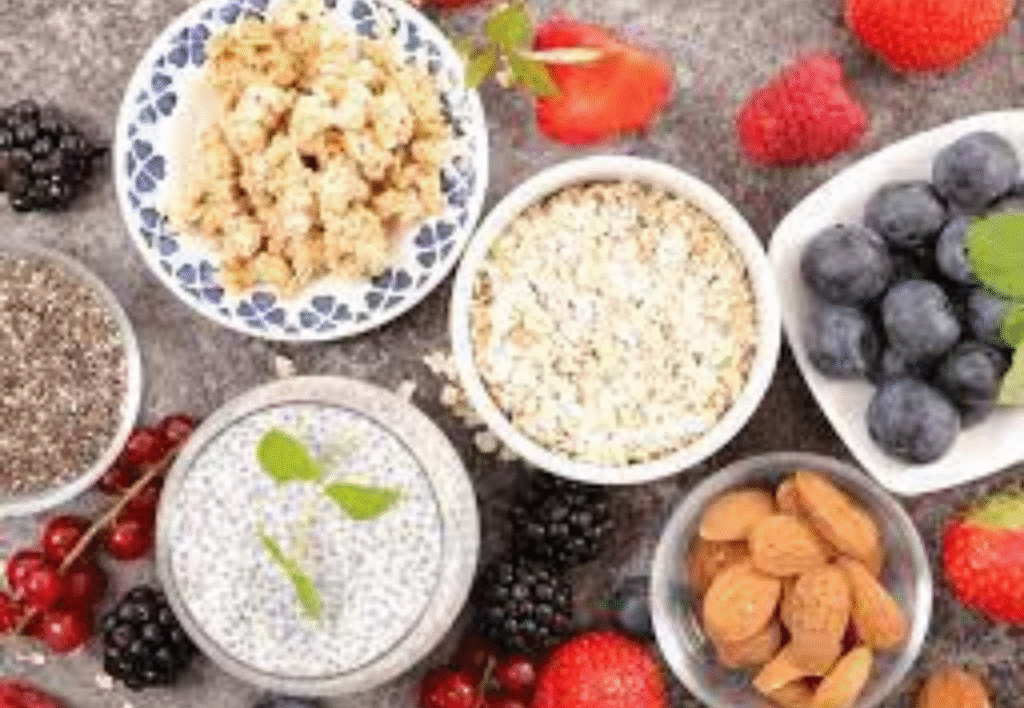In today’s fast-paced world full of processed foods, artificial ingredients, and hectic schedules, maintaining a healthy lifestyle can be overwhelming. But amidst this chaos, a simple philosophy has emerged as a guide to wellness: “Clean Eating, Feel Amazing.” This isn’t just a trendy slogan it’s a transformative approach to nourishing your body and mind with whole, natural foods. Clean eating is more than just a diet; it’s a sustainable lifestyle that promotes long-term health, energy, and happiness.
What is clean eating?
At its core, clean eating means consuming foods that are as natural as possible. This includes choosing whole, unprocessed foods like fruits, vegetables, whole grains, lean proteins, and healthy fats and minimizing or avoiding refined sugar, artificial additives, preservatives, and highly processed foods. Unlike fad diets, which often rely on severe restrictions, clean eating is about making conscious and informed dietary choices. It’s flexible, realistic, and adaptable to individual needs and preferences. It’s not about perfection, but about developing a healthier you.
The Basics of Clean Eating
To fully embrace clean eating, it’s helpful to understand the basic principles. These include:
Eat whole foods:
Whole foods are minimally processed and free of artificial ingredients. These include:
- Fresh fruits and vegetables
- Whole grains such as brown rice, quinoa, and oats
- Lean proteins such as chicken, fish, eggs, and legumes
- Nuts, seeds, and healthy oils (such as olive oil)
Limit processed foods:
Processed foods often contain added sugar, salt, unhealthy fats, and artificial ingredients. These include:
- Packaged snacks
- Sugary cereal
- Sodas and sugary drinks
- Fast food
While some processed foods are relatively safe (e.g., frozen vegetables), highly processed foods should be limited.
Read the ingredient list:
If you don’t know or can’t pronounce an ingredient, it’s probably not healthy. A short, recognizable ingredient list is ideal.
Cook more from scratch:
Homecooked meals give you full control over ingredients and portion sizes. They also foster a stronger connection with the food you eat.
Stay hydrated:
Eating healthy isn’t just about food; it’s also about hydration. Water supports digestion, nutrient absorption, and detoxification. Aim to drink at least eight cups a day, more if you’re active.
The benefits of a healthy diet
When you eat healthy, you’ll notice real, tangible benefits that go beyond the scale. How clean eating can improve your life:
More Energy:
Say goodbye to the midday slump! Healthy, nutrient-dense foods provide steady, sustained energy. Whole grains, lean protein, and healthy fats stabilize blood sugar levels and keep you feeling energized throughout the day.
Improved Digestion:
High-fiber foods like fruits, vegetables, legumes, and whole grains promote healthy digestion and regular bowel movements. A healthy diet supports your gut microbiome, which plays an important role in your overall health.
Weight Management:
By eliminating empty calories and processed foods, many people naturally achieve or maintain a healthy weight. Healthy eating focuses on quality over quantity, helping you feel full and satisfied without overeating.
Clearer Skin:
Nutrient-rich foods provide essential vitamins and antioxidants that can reduce acne, inflammation, and dryness. Drinking plenty of water and cutting down on sugar also contribute to a healthy, radiant complexion.
Better Mood and Mental Clarity:
There’s a close connection between our diet and our well-being. Clean eating stabilizes blood sugar levels, supports brain health, and helps reduce mood swings, anxiety, and depression. Healthy fats like omega-3 fatty acids (found in fish and flaxseed) are particularly beneficial for brain function.
Lower Risk of Chronic Disease:
Clean eating is linked to a lower risk of heart disease, type 2 diabetes, high blood pressure, and some cancers. Antioxidants, fiber, and healthy fats help reduce inflammation and protect your cells.
First Steps How to Successfully Switch to Clean Eating

If you’re new to clean eating, don’t feel pressured to overhaul your entire diet overnight. Small, consistent changes are more effective and sustainable in the long run. Here’s a step-by-step guide:
Clean out your pantry:
Start by eliminating foods high in sugar, artificial additives, and refined grains. Replace them with healthier staples like oats, brown rice, quinoa, lentils, nuts, seeds, and whole-wheat pasta.
Buy Fresh Produce:
Aim to fill half your plate with colorful fruits and vegetables at every meal. These are packed with fiber, vitamins, and antioxidants.
Choose Lean Proteins:
Incorporate a variety of protein sources into your diet: chicken, fish, eggs, tofu, legumes, and Greek yogurt are all excellent options.
Focus on Healthy Fats:
Include healthy fat sources like avocado, olive oil, chia seeds, nuts, and fatty fish like salmon in your diet. These fats support brain health, hormone balance, and satiety.
Meal Planning:
Planning helps you avoid reaching for processed, convenience foods. Prepare meals and snacks in advance and bring healthy alternatives with you when you’re on the go.
Mindful Eating:
Clean eating isn’t just about what you eat, but also how you eat. Eat slowly, savor your food, and be mindful of your hunger and fullness.
Sample Clean Eating Meal Plan
Here’s a sample clean eating day:
Breakfast:
- Overnight oats with chia seeds, almond milk, berries, and a little honey
Snack:
- Apple slices with almond butter
Lunch:
- Quinoa salad with grilled chicken, cucumber, cherry tomatoes, avocado, and lemon olive oil dressing
Snack:
- Greek yogurt with flax seeds and a few walnuts
Dinner:
- Baked salmon with roasted sweet potatoes and steamed broccoli
Dessert (optional):
- A piece of dark chocolate or a frozen banana with cocoa powder
Overcoming Common Challenges
Making the switch to clean eating isn’t always easy. Here are some common obstacles and how to overcome them:
Lack of Time:
Cooking every day can be daunting. Try weekend prep, a slow cooker, or prepping ingredients for quicker and easier meal prep during the week.
Cravings for Processed Foods:
Cravings are natural, especially in the beginning. Instead of resisting them completely, find healthier alternatives for example, fruit instead of candy or popcorn instead of chips.
Social Situations:
Eating out or parties can be difficult. Look for dishes that fit clean eating, such as grilled proteins and salads. Don’t stress about indulging occasionally it’s about balance, not rigidity.
Budget Concerns:
Healthy food doesn’t have to be expensive. Shop seasonally, buy in bulk, and consider frozen fruits and vegetables, which are nutritious and affordable.
Clean Eating and Sustainability
Clean eating also has a positive impact on the environment. By choosing wholesome, plant-based foods and minimizing processed, packaged products, you reduce your carbon footprint. Local and seasonal consumption supports farmers, reduces transportation emissions, and promotes biodiversity. Eating plant-based meals several times a week can also help reduce greenhouse gas emissions and conserve water and land resources. Clean eating, practiced consciously, is a win-win situation for both your body and the environment.
Conclusion:
“Eat Clean, Feel Amazing” is more than just a sloga it’s a powerful philosophy of life that respects your body, promotes your mental and emotional well-being, and contributes to a healthier planet. Clean eating encourages you to take responsibility for your health, make conscious choices, and reconnect with nature through nutrition. The path to clean eating doesn’t require perfection it requires intention. Start small, stay consistent, and listen to your body. Over time, you’ll not only feel more energized and alive, but you’ll also develop a deeper appreciation for the power of food as medicine, sustenance, and pleasure. So what are you waiting for? Start your clean eating journey today—and feel great tomorrow.more info…
